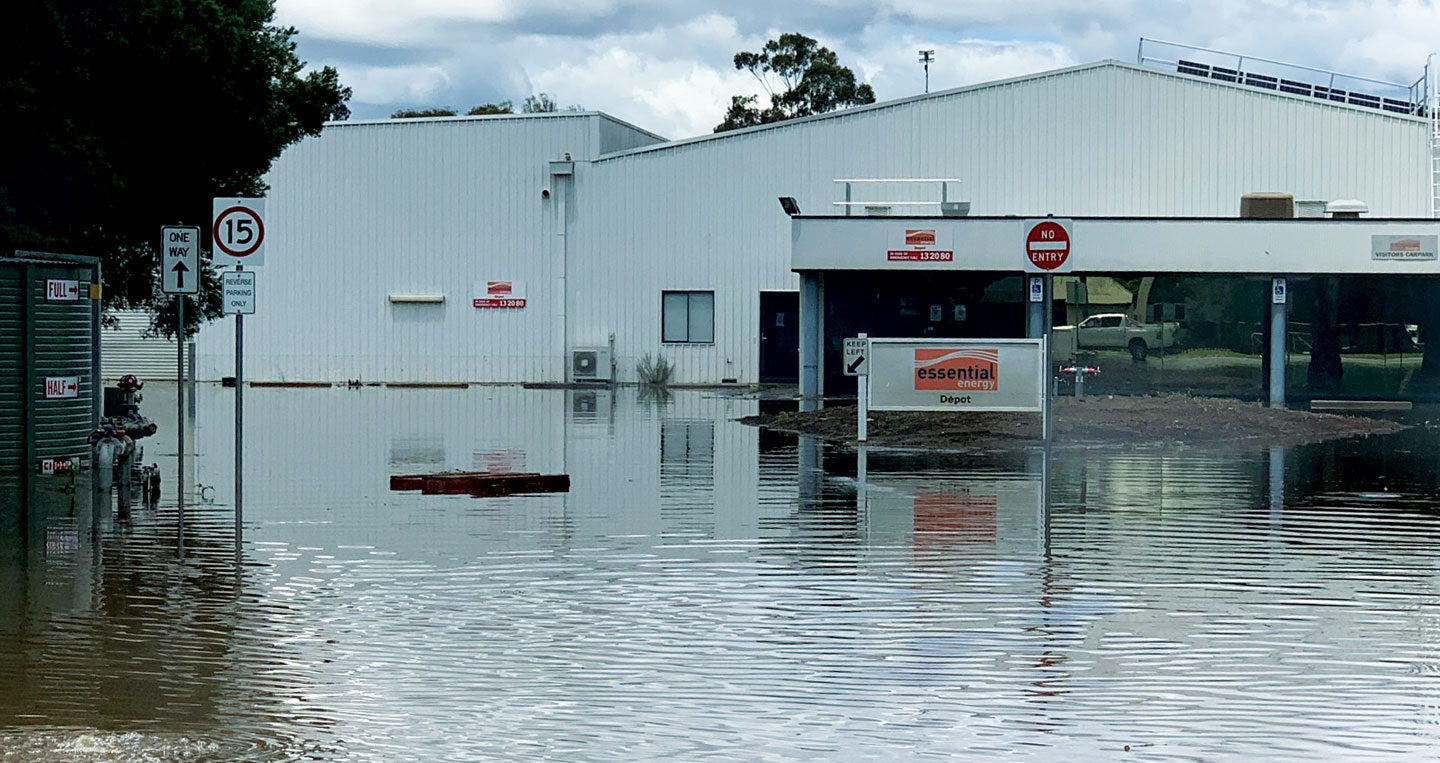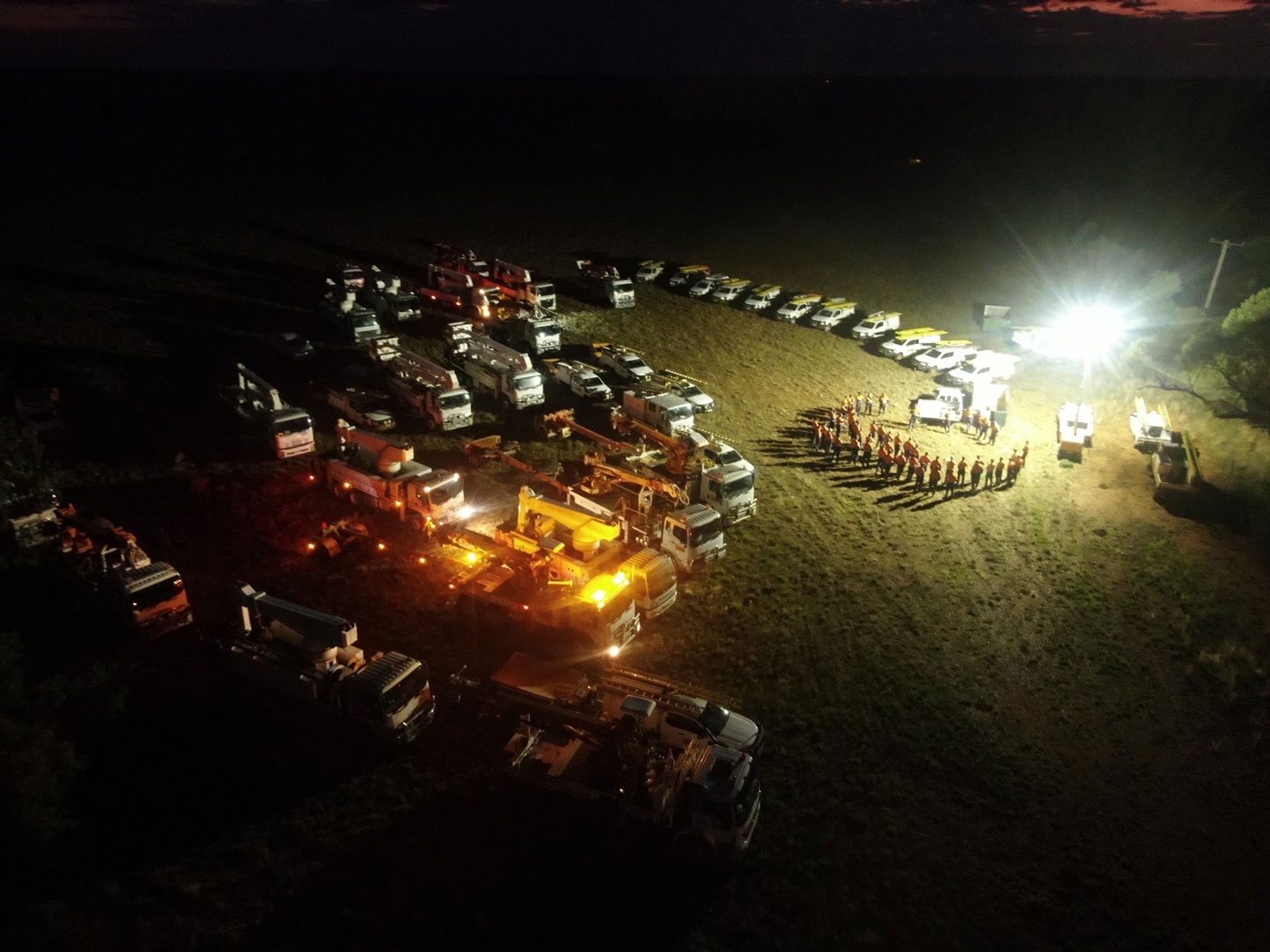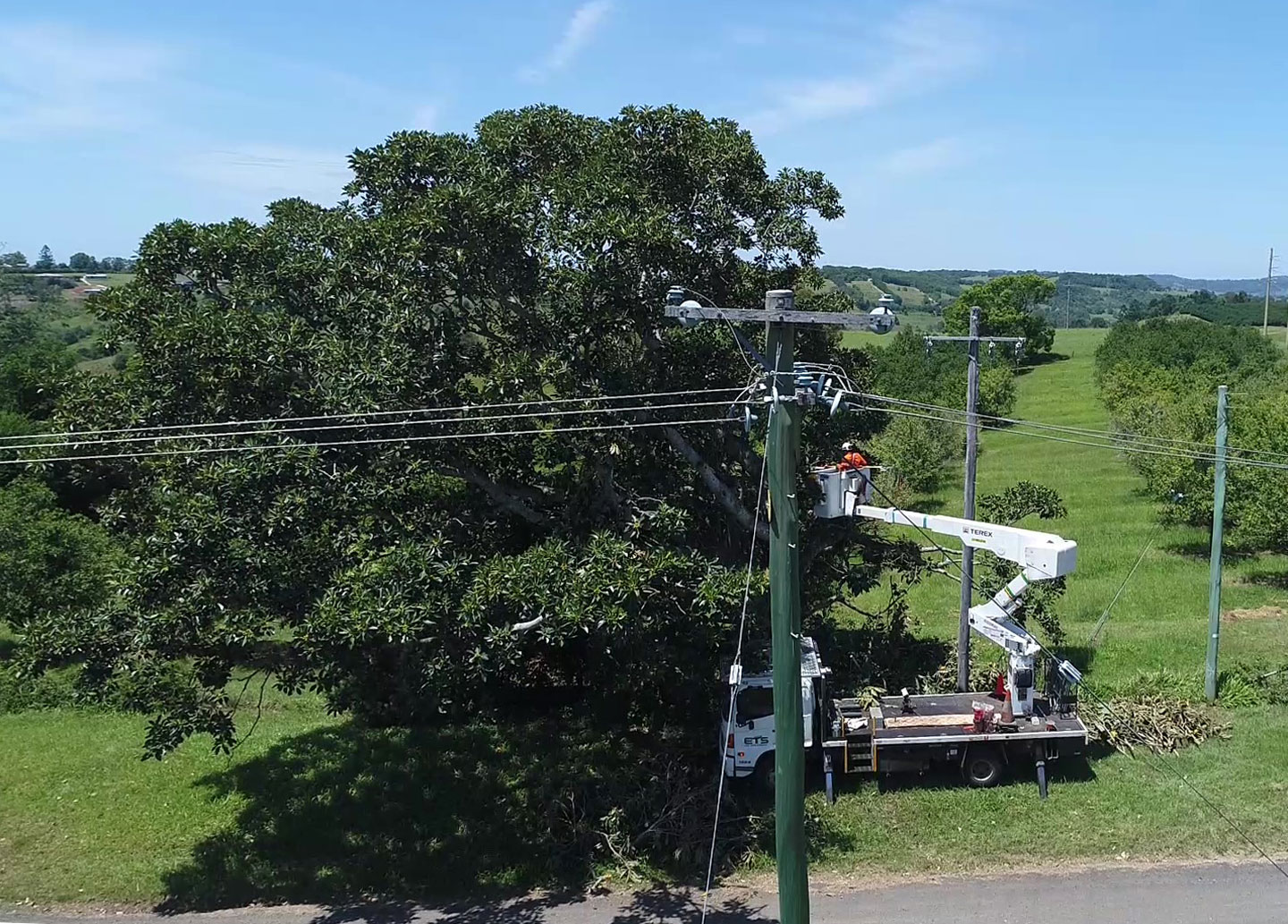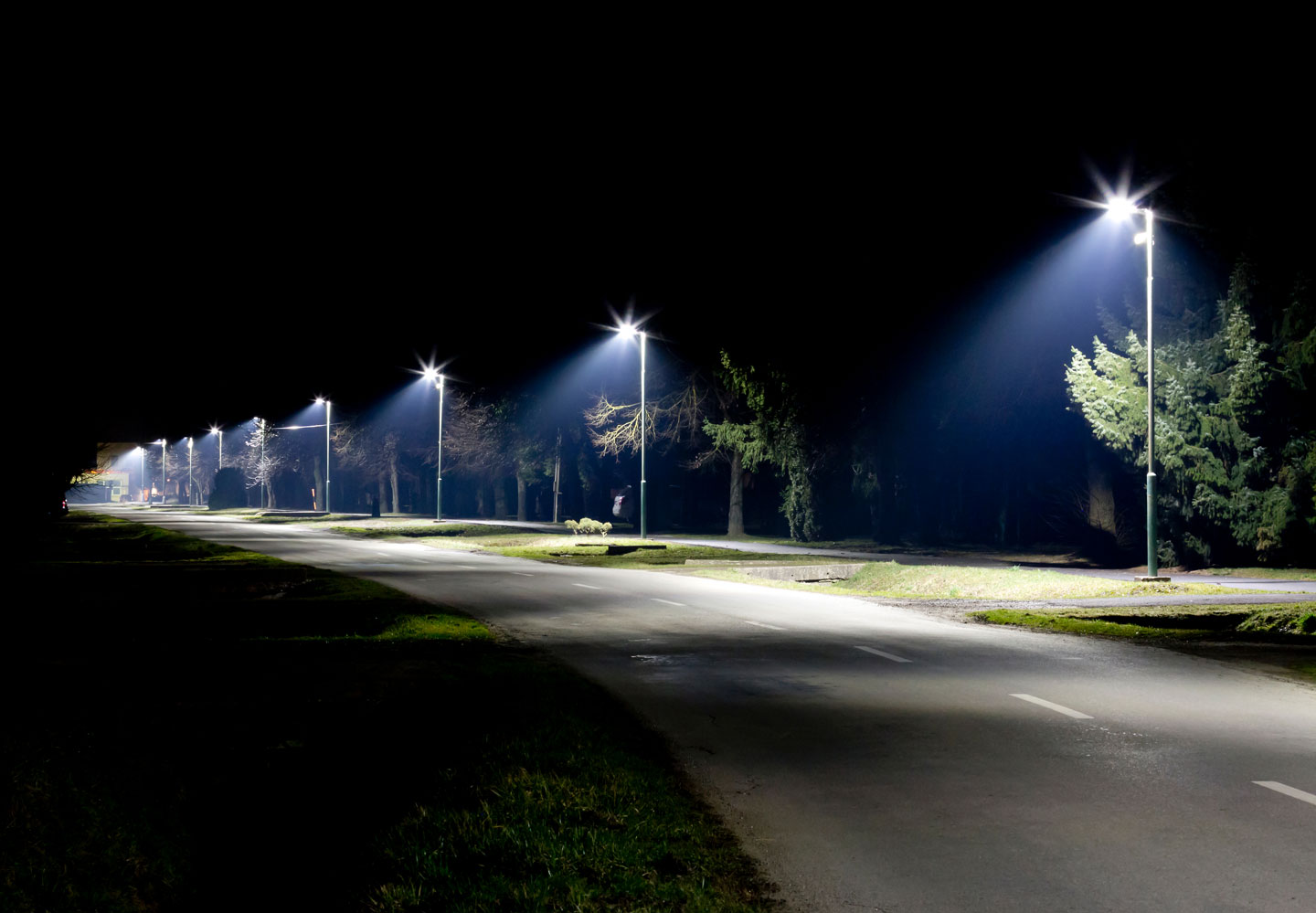Our Operations
2022-23 HIGHLIGHTS

Asset inspection
- 297,129power pole inspectionsup from 280,419 last year
- 32,251kmof powerlines inspected via drone inspectionsup from 23,371km last year
- 67,830drone flights by asset inspectorsup from 58,256 last year
- 830,429inspection photos takendown from 875,415 last year

Vegetation management
- 186,981powerline spans with vegetation removedup from 173,883 last year
- >20,000hazard trees removedup from >6,800 last year
- 9,991spans inspected in bushfire-related vegetation maintenanceup from 3,868 last year

Maintenance, capital improvement and fault and emergency
- 18,397planned outagesup from 17,468 last year
- 24,657unplanned outagesdown from 28,119 last year
- 15,392cross arm replacementsup from 14,571 last year
- 7,638pole replacementsdown from 8,883 last year
- 8,257zone substation preventative maintenance work tasksdown from 8,566 last year
- 2,047service mains overhead replacements (contractors)down from 7,685 last year
- 994construction milestonesup from 965 last year

Fleet
- 384,615 pre-operational fleet inspectionsup from 301,208 last year
- 34,365,107kmtravelledup from 32,454,007km last year

Meter reading
- 96%of meter reads to schedule up from 95% last year
Floods response
2022 was the wettest calendar year on record for many parts of NSW. Substantial flooding across much of our network area reduced our ability to efficiently access the network and our ability to complete works. During this period, we navigated many challenges, including:
- flooding along regional river systems which impacted many communities and our network, particularly in low lying areas, for many months
- inundation of our Cowra and Molong depots
- inundation of the Belatta zone substation, which impacted transformers and switchgear, requiring temporary generation to be connected while repairs were safely carried out
- network strikes following the mass migration of pelicans to Hillston, part of the Lake Brewster River system – necessitating significant line augmentation and relocation to reduce customer impact.
In response to these challenges, we brought in specialist equipment for fault and emergency responses and planned maintenance. This included helicopters for patrolling lines and identifying faults, air boats to access the network, as well as utility terrain vehicles, excavators and other tracked machinery.

Assisting South Australia
Seventy-five of our team members travelled to SA Power Networks (SAPN), assisting in the restoration of electricity supply following storms that caused the largest supply interruption since the state-wide blackout in 2016. SAPN also trained five Essential Energy team members to help reconnect flood-inundated buildings in South Australia during February and March 2023.
Network maintenance
Building, operating and maintaining one of Australia’s largest electricity distribution networks requires a significant operational program, to monitor the health of network assets, undertake preventative maintenance and respond to faults and emergencies.
Unprecedented rain and widespread flooding across regional NSW throughout 2022 significantly impacted our network maintenance program. See the ‘Big Hits’ case study for how our teams responded to this challenge – dramatically reducing the backlog of maintenance tasks by the end of June 2023.
Big Hits maintenance program
2022-23 began with a major backlog of network maintenance tasks following a number of years with unprecedented events (bushfires, COVID-19 and floods). This backlog was addressed by focusing on completing ‘Big Hit’ maintenance efforts, at Coffs Harbour, Taree, Cowra, Goulburn, Moree, Gunnedah, Condobolin, Parkes, Lismore, Narrabri and Young. More than 350 field employees joined the Big Hits, plus employees providing support services. Business-as-usual maintenance work continued across our entire network alongside these focused events. As a result, we reduced the number of backlogged tasks from more than 11,000 on 1 July 2022 to fewer than 2,400 on 30 June 2023. These network maintenance works are critical to maintaining network reliability and resilience and reducing network safety risks, including bushfire risks. Importantly, there were no significant safety incidents or recorded injuries in these Big Hit efforts.
To make this possible, many of our people had to spend time away from home for many days at a time. We, and the communities they served, are grateful for their efforts.

Major projects
| DESCRIPTION | BEFORE 2022-23 (DIRECT PROJECT $) | 2022-23 (DIRECT PROJECT $) | TOTAL COST (DIRECT PROJECT $) | COMPLETION DATE |
|---|---|---|---|---|
| Install 330/11kV transformer at Upper Tumut 330kV Switching Station (Cabramurra Supply Restoration Investments) | $12,976,296 | $4,578,898 | $17,555,194 | 02/05/2023 |
| Casino-Mallanganee 33kV feeder 8401 replace 7.08 Cu conductor 15km | $2,142,485 | $658,802 | $2,801,287 | 28/11/2022 |
| Orange North ZS-Transgrid rebuild of the existing 66kV Busbar-Stage 3 | $1,732,056 | $321,890 | $2,053,946 | 21/04/2023 |
| Googong Town ZS add 2nd 132/11kV 30MVA transformer | $0 | $1,595,248 | $1,595,248 | 17/05/2023 |
|
Four major projects were completed during 2022-23, with total direct project costs exceeding $1.5 million1. These were needed to replace ageing infrastructure, accommodate load growth and rectify damage caused by the 2019-20 bushfires. |
||||
- Past Annual Reports have included projects with total costs exceeding $1 million as Major Projects. Changed to $1.5 million due to increased project and supply chain costs and to align with internal reporting for network investment.
Cabramurra
In January 2020, the Cabramurra township, Selwyn Ski Resort and Selwyn communications tower all lost power when bushfires damaged much of the network in Kosciuszko National Park. We took this opportunity to reconfigure the network by installing a new transformer at Transgrid’s Upper Tumut Switching Station and new lines from Upper Tumut to Cabramurra and Cabramurra to Selwyn. We also replaced the overhead 33kV powerline from Providence Portal to Selwyn Snow Resort with an underground powerline to reduce the likelihood of faults and emergencies in this harsh environment. Assets were energised and the project practically completed on 2 May 2023, with minor civil components remaining.
Casino-Mallanganee
The Casino-Mallanganee powerline, which supplies three zone substations and approximately 2,000 customers, was originally installed in the early 1950s. During 2022-23 we completed the project to replace an end-of-life 15 km section of the powerline with new overhead conductors which were also better suited to the geographic location.
Orange
Essential Energy owns and operates outdoor equipment within the Orange substation yard owned by Transgrid. To accommodate works required by Transgrid at the site, Essential Energy reconfigured the Orange North Zone Substation through the installation of new frequency injection plants, relocating and installing transformers, reconstructing supporting transmission line works and demolishing the existing compound.
Googong
In 2016, the Googong Town substation was constructed with a single transformer. Since then, load has increased significantly as the area continues to develop. Essential Energy installed a second transformer to ensure a safe and sustainable supply.
Vegetation management
Managing vegetation is critical to network reliability and public safety. Through our Vegetation Management Strategy, over the past year we continued to meet the obligations set out in the Industry Guide ISSC3 Management of Vegetation in Vicinity of Electrical Assets. This was challenging in light of heavy rainfall and flooding events during 2022.
Key facts
- >75,000kmof electricity network inspected for vegetation management
- >458,000Trees trimmed and >20,000 trees removed – to help maintain network reliability and resilience and reduce network safety risks
Damaged roads and water-logged ground caused delays to our scheduled Vegetation Management Program. The rainfall also led to unusually vigorous growth of vegetation later in 2022. However, by prioritising workload and redistributing resources, we were able to inspect 75,170 km of network, trim more than 458,000 trees and remove more than 20,000 trees during the year. This work is critical for maintaining network reliability and resilience and reducing network safety risks, including bushfire risks, by reducing the risk of vegetation contacting powerlines.
We are committed to improving outcomes through collaboration. In September 2022, we facilitated a two-day workshop where we were joined by TasNetworks, Endeavour Energy, Powerlink, Evoenergy, AusNet Services, Western Power, SA Power Networks and Ergon Energy. Specialists in vegetation management and digital asset management discussed topics including best practice, future directions, and the merits of satellites and drone technologies.

Bushfire preparation
Reducing the incidence and impact of bushfires is a critical aspect of our business. During 2022-23, our annual Pre-Summer Bushfire Inspection Program included an aerial patrol of 120,000 poles and powerline spans in addition to routine asset and vegetation inspections.
We also partnered with a number of industry specialists in bushfire risk and climate change modelling to gain a deeper understanding of relative risk across the network and the potential impact of climate change. We aligned with the Energy Networks Australia Project IGNIS working group review, which developed a consistent approach to quantifying bushfire consequences across the industry. We worked to establish probability of failure models for various asset classes on our network, specifically those which might start a fire if they fail. We also engaged external specialists to conduct scenario modelling to quantify the financial and non-financial impacts of climate events on our network assets. This included understanding potential long-term physical risks if global greenhouse gas emissions reduction efforts fail to meet Paris Agreement targets.
The modelling is already informing strategies, resilience and mitigation options, including:
- revising bushfire risk priority areas within the network
- using more resilient composite power poles for identified risk-based replacements
- undergrounding overhead power lines in high bushfire risk areas
- replacing long overhead powerlines with Stand Alone Power Systems (SAPS) and microgrids in high-risk locations
- installing solar and battery backups at key telecommunications tower sites.
These initiatives were included in our 2024-29 Regulatory Proposal submission.
The annual audit of network management activities by our technical and safety regulator, IPART, found that we remain materially compliant with commitments set out in our Electricity Network Safety Management Plan. We also completed and/or progressed identified actions for improvement in accordance with our commitments.
We are now working to ensure that both vegetation management and asset inspection and maintenance services transition smoothly to revised bushfire risk priority areas. This means managing the material impact on resourcing levels as we shift work volumes between affected areas, and consulting with communities and landholders in areas where there will be a significant increase in vegetation management activities. The outcome will be a more targeted, fit-for-purpose maintenance and vegetation management program with the primary objective of reducing bushfire risk.
Mobile underground voltage detection survey
Essential Energy engaged Osmose Australia to conduct a pilot survey of our underground network to detect any voltages on earthed equipment such as streetlight poles, metal fences, pillar bases and traffic signals that could result in shocks or tingles. The objective of the pilot was to assess the possible benefits of an ongoing survey program.
Early detection can help us to protect public safety by quickly rectifying any voltage defects. It can also minimise environmental impact by reducing electrical losses. A mobile unit using non-invasive electric field detection covered approximately 2,750 km of the network from Albury to Tweed Heads, from February to April 2023, and proved capable of detecting underground objects energised with less than one volt. The cost benefit analysis and risk assessment from the pilot determined an ongoing program is not required in the near future.
Streetlights
Essential Energy is responsible for the maintenance and/or billing of approximately 178,000 streetlights for 83 local government councils. The Bulk LED Upgrade Program is now complete, with 96 per cent of the streetlights we manage now LED, thanks to the more than 20,000 upgrades and spot replacements carried out in 2022-23. LED lights are more energy efficient and typically reduce running costs by 40 to 50 per cent. Work will continue through 2023-24 to convert to LED the four per cent of streetlights that were not converted under the program.
A new online portal, accessible via mobile phone or computer, is making it easier for customers to report streetlight faults via our website. Launched in July 2022, it provides an interactive map so that customers can locate and report a faulty streetlight in relation to their home or business. An opt-in function can let them know when the fault is repaired.
During 2022-23 we commenced a smart streetlighting pilot in Bathurst, to explore benefits and issues of the technology for the council and Essential Energy. At the end of the pilot in December 2023, we will have a better understanding of the technology, to inform how we move forward with councils.

Essential Water
Essential Water provides a secure water supply and reliable sewerage services to customers in the far west of NSW, with a network of dams, reservoirs, pumping stations, treatment plants and pipelines. Across 2022-23 Essential Water customers experienced above average rainfall and below average temperatures, for the third consecutive year. With an ageing workforce and a number of staff retiring, recruitment of new staff continues to be a challenge.
Independent Pricing and Regulatory Tribunal pricing review
The Independent Pricing and Regulatory Tribunal (IPART) released its pricing review for Essential Water in November 2022 for the period 1 January 2023 until 30 June 2026. For most customers, prices increased by inflation on 1 January 2023, and will continue to be adjusted in line with inflation each year to 30 June 2025. For some pipeline customers prices increased by slightly more than inflation.
Transfer of ownership of Imperial Lake
After decommissioning was completed in March 2022, ownership of Imperial Lake was transferred to Landcare in late 2022. The property is expected to be developed and become an important part of the Broken Hill landscape.
Impacts of flooding
The major flooding that occurred along both the Darling and Murray Rivers in 2022-23 had a devastating impact on the environment, wildlife and local agriculture. It also affected raw water quality, with oxygen levels dropping below that considered optimal for treatment. Combining a total of 1,428 ML of water from Stephens Creek Reservoir with water from the Murray enabled a more consistent treatment process for our customers. The Menindee water treatment plant, which was commissioned in April 2022, succeeded in treating the very low-quality river water during the catastrophic fish deaths.
Mica Street lightning strike
A lightning strike shut down Essential Water’s treatment plant at Mica Street in Broken Hill, at 9:30pm on 20 September 2022. Essential Water crews worked overnight and throughout the following day to identify and rectify damage to the plant’s Supervisory Control and Data Acquisition (SCADA) system. Crews were able to restart the plant at approximately 3pm on 21 September.
New wastewater treatment plant
During 2022-23 work began on the design for a new wastewater treatment plant at Broken Hill. The existing plant, constructed in 1938, no longer meets effluent licence conditions and repairs are no longer viable. The detailed design is planned for completion by June 2024, with construction to begin later in 2024.
Water consumption, operational works and customer contact
In 2022-23 Essential Water delivered 4,600 ML of potable water, an increase of 258 ML compared with the previous year. Delivery of raw water fell by 126 ML to 795 ML.
The Operational Works Program included:
- 826 metres of water mains renewed
- 6,421 metres of sewer mains relined
- 14,303 metres of sewer mains rodded
- 20 main bursts repaired
During 2022-23 we received 6,462 customer calls and 20 customer complaints. These were all responded to according to our customer enquiries response processes.
Essential Water financial performance in 2022-23
Essentials Water’s loss before interest and tax was $0.7M, against a target loss of $14.1M. This result was driven by:
- depreciation and impairment favourable $30M due to the capital program below budget delivery
- corporate charges unfavourable $14.3M due to the capital program below budget delivery
- operating expenditure unfavourable $2M due to the under recovery of labour onto the capital program.
Essential Water invested $4.2M on internally funded capital programs in 2022-23, $21.9M below target due to two major projects which were Graziers Pipeline and Wills Street Wastewater Treatment Plant. Graziers Pipeline was delayed due to Aboriginal heritage findings. Wills Street Wastewater Treatment Plant was delayed due to ongoing COVID-19 issues; however a contractor has now been engaged to proceed with the detailed design.

